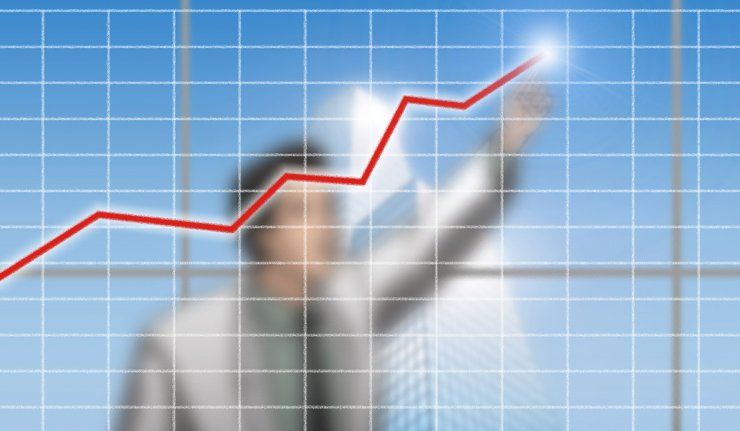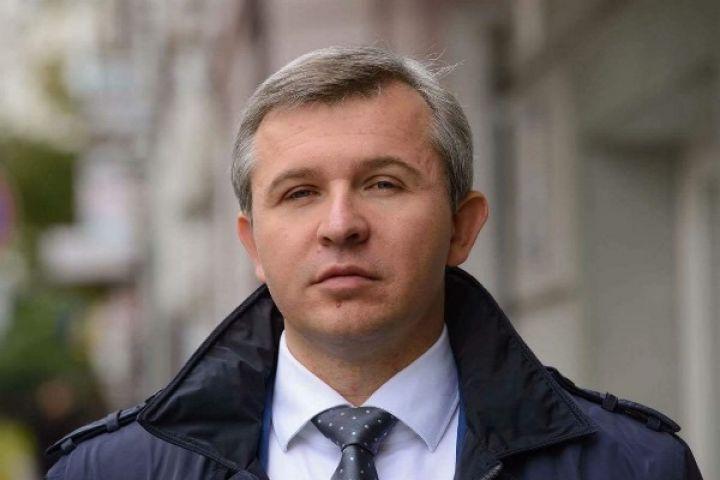
Ukraine's economic outlook for 2020: modest growth, low inflation, and possible devaluation return
The growth of the Ukrainian economy in 2019 may become the highest in the last eight years, while inflation – the lowest over the past six years. The country's leading experts provided their economic forecasts for 2020 and identified key risks.
At the end of 2019, Ukraine is seeing good economic development figures. According to estimates of the State Statistics Service, GDP growth in the third quarter exceeded 4% in annual terms. This means that economic growth over the whole year is likely to outrun the figure of 2018 at a little over 3%, being the highest over the past eight years.
The structure of the Ukrainian economy continues to transform. Industrial output in January-November dropped by 1.2%. At the same time, Ukrainian farmers in MY 2018-2019 exported the record volume of grain in the history of independent Ukraine – almost 50 million tonnes – and boasted record-high crops. Ukrainian developers are not far behind: over the eleven months they have increased the volume of their operations by more than 20%.
Foreign trade remains scarce – for ten months, imports of goods to Ukraine exceeded exports by $8.5 billion. But the deficit was fully compensated by substantial financial inflows coming from labor migrants, which for the indicated period amounted to almost $ 10 billion.
In the past year, non-residents discovered the Ukrainian debt market. In order to buy Ukrainian government's domestic loan bonds, foreigners brought into Ukraine over $4.5 billion, which means, twice as much inflow of foreign direct investment in the form of equity participation in capital.
As a result of the massive influx of foreign capital into Ukrainian domestic bonds, Ukraine's national currency has strengthened 16% since year-start, and is steadily holding up to a four-year historical maximum of UAH 23 per dollar.
Due to the strong hryvnia, consumer inflation in Ukraine slowed to 5% in annual terms in November, or to the medium-term goal of the National Bank. Most likely, the annual indicator will be lower than last year's, which was 9.8%; that is, it will become the lowers over the past six years.
The average income of Ukrainians is also growing. The average nominal salary of a full-time employee in October increased by 16% on year. For example, in Kyiv, the average salary is almost UAH 16,000, or $700 at the NBU rate.
Due to the growth of citizens' incomes, retail trade continues to flourish and warm up the economy – in January-November its turnover grew by more than 10% on year, up to UAH 980 billion.
Meanwhile, the state budget of Ukraine as a result of an unexpectedly strong hryvnia beefup and a number of other factors over the eleven months fell short of UAH 56 billion of target revenues and most likely will not be implemented in full. At the same time, a strong hryvnia allowed reducing the level of public debt to a safe level of about 50% of GDP.
Ukraine's key lenders remain conservative in their forecasts. The International Monetary Fund predicts economic growth in 2020 at 3% with inflation of 5.6%, while the World Bank suggests GDP growth of 3.7% with inflation of 5.5%.
The forecasts of the Ukrainian authorities are almost identical. The National Bank expects economic growth at 3.5% with inflation at 5%. The 2020 state budget is based on the government forecast with a GDP growth of 3.7% with inflation of 5.5% and an average annual rate of UAH 27 to the dollar. However, the latter figure will be adjusted in the near future.
Most experts polled by UNIAN offer the same restrained outlook.

Director of Economic Programs of the Ukrainian Institute for the Future, Anatoliy Amelin:
"The year ends better than many expected and predicted. An important factor in the growth of the Ukrainian economy – and we are approaching an almost 4% growth this year – was consumption. The biggest change is the forex rate. The strengthening of the national currency led to a number of imbalances in the national economy. The arrival of large foreign speculative capital – more than $4.5 billion – in Ukrainian government bonds created certain risks in the event of a negative development scenario for our country.
Ukraine is an export-oriented country, with more than half of these exports coming being agricultural products. The quality of life of Ukrainians, the conditions for doing business in Ukraine are influenced by global prices for raw materials, rather than decisions of made by Ukrainian government. The decline in industrial output in Ukraine is the result of monetary policy – the strengthening of the national currency, as well as the lack of industrial policy and a long-term development strategy.
If we talk about raw material prices, next year a positive trend is expected for agricultural products and deterioration – for steelmakers. One of the key challenges remains the trade war between the United States and China. China is slowing its growth, which is a factor affecting the demand for commodity assets worldwide. An important factor next year is the U.S. election, because it will determine Ukraine's further relations with America. Brexit, debt bubbles in Latin America and emerging markets could also create a negative backdrop for the global economy in 2020."

Head of ICU Group Corporate Financial Analysis Division Oleksandr Martynenko:
"The situation in the economy in the past year exceeded our expectations. Economic growth was above the forecast, inflation was lower, while the hryvnia became one of the fastest-growing currencies in developing economies. Accordingly, we see that the population's purchasing power is growing, which is reflected in consumer sentiment – it is now record-high since 2008. There has been no such optimism for a long time.
2020 may be a little more complicated due to the threat of a global recession and trade wars between the U.S. and China. Financial markets are quite sensitive to these factors, and there is a threat that the situation will not improve. And so far no one undertakes to predict what the final effect will be of the duties that have already been introduced, not to mention possible similar solutions in the future.
As for the impact of revaluation on the economy, I think that the positive effect prevails. Revaluation was not significant. Perhaps this is noticeable to exporters. But now it is consumption that drives our economy, our GDP, to a much greater extent than exports do.
The revaluation will continue next year, and this is where the danger lies, first of all, for Ukrainian exporters of metallurgical products. They have reduced margins due to the growth of the hryvnia and narrowed markets due to the trade war. Perhaps the farmers will also see slightly decreased profits, but they will continue to be the locomotive of the Ukrainian economy."

Concorde Capital Analyst Yevhenia Akhtyrko:
"The outgoing year is another year of moderate recovery after the failure of 2014-2015. The biggest surprise is a strong and lasting revaluation, which no one could predict. The success of the year is the reduction of inflation to the NBU target ahead of schedule. The zone of increased focus is industry, which showed a faster decline in the second half of the year as a result of the lack of structural changes. In the structure of industry, there's only a small share of modernized or new enterprises creating high added value products. There's a high share of metallurgy, which is highly dependent on the pricing environment in foreign markets. There's a weird situation in the food industry, which is also showing a decline, despite a rather high growth in private consumption and a good raw material base due to record crops over the past two consecutive years.
We expect growth to continue next year, but the pace of growth will be lower. Of major concern is the industrial decline. In 2019, this decline was offset by growth in agriculture, housing construction, and trade. If the period of unfavorable external conditions for Ukrainian metallurgy drags on, the situation could become very dangerous. It is already clear that with Ukraine's current industrial structure, it is impossible to achieve sustainable and high growth rates. To make things change, we need systemic changes to improve the investment climate and work to attract foreign investors. At the same time, the new government needs quick changes to maintain popular ratings. Therefore, there is a high probability of attempts to address the issue of weak economic growth through point methods, which do more harm than good.
An example of such methods is a debate on the need to reduce lending rates. High rates are not some conspiracy between the NBU and commercial banks, but the result of high risks associated with the weakness of the Ukrainian economy in general. Rates will be reduced if there is a steady improvement in the economic environment and expectations, and hence, lower risks. This takes time. Even if lending starts to recover, this will not resolve fundamental issues of the Ukrainian economy. We need large amounts of funds that the Ukrainian banking sector is simply unable to provide. Therefore, foreign direct investment and borrowing in foreign markets are required. And this is again a matter of reducing risks."
Analyst at Univer Investment Group Mykhailo Fedorov:
"If authorities complete land reform, if there's no aggravation in Donbas or issues in cooperation with the IMF, Ukraine's economy in 2020 will grow faster. The national currency next year may strengthen to UAH 21 per dollar, which will be an important factor for further inflation slowdown. Given the National Bank’s restrained policy, inflation will not exceed 5% at year-end. Suppliers will adjust their prices relative to the rate, which will provide an additional incentive to reduce inflation. However, pressure on prices will continue amid rising incomes.
The current positive trends of 2019 will prevail, including growing business activity, consumer confidence, and lower risks of an escalation of the military conflict in eastern Ukraine. Moody's will increase Ukraine's rating to "B3" or higher. Rated at at "B" level by world's three leading rating agencies, Ukraine may count on a higher inflow of foreign capital.

Due to the slowdown in inflation and a decrease in the NBU key rate, the cost of lending will gradually decrease, while at the same time, the volume of loans will go up. This will be a powerful stimulus for the economy, allowing a faster growth than it was in 2019. As a result, the annual growth of real GDP will exceed 4%."
Consensus forecast for Ukraine economy in 2020:
Experts | Expected annual GDP growth, % | Inflation at year-end, % | Hryvnia rate at year-end, UAH / USD |
International Monetary Fund | 3.0 | 5.6 | --- |
World Bank | 3.7 | 5.5 | --- |
National Bank of Ukraine | 3.5 | 5.0 | --- |
Government of Ukraine | 3.7 | 5.5 | --- |
ICU Group | 3, 2 | 5.3 | 25.50 |
Concorde Capital | 3.0 | 4.8 | 26.00 |
IG Univer | 4.0 | 5.0 | 21.00 |
Ukrainian Institute for the Future | 4.4 | 7.0 | 27.00 |
Consensus (median) | 3.6 | 5.4 | 25.75 |
If we summarize the experts' estimates, the Ukrainian economy in the coming year is likely to show modest growth, just as this year, while the inflation rate will remain relatively low. The national currency will remain strong relative to the crisis years, but may weaken somewhat compared to the current UAH 23 per U.S. dollar.
In other words, 2020 promises to be a logical continuation of the outgoing year. So a breakthrough with an annual economic growth of 5-7%, promised by the government and necessary to significantly improve living standards, will once again be delayed. That's unless some miracle happens, of course. After all, on New Year's Eve everyone wants to believe in miracles.
Olha Hordienko

